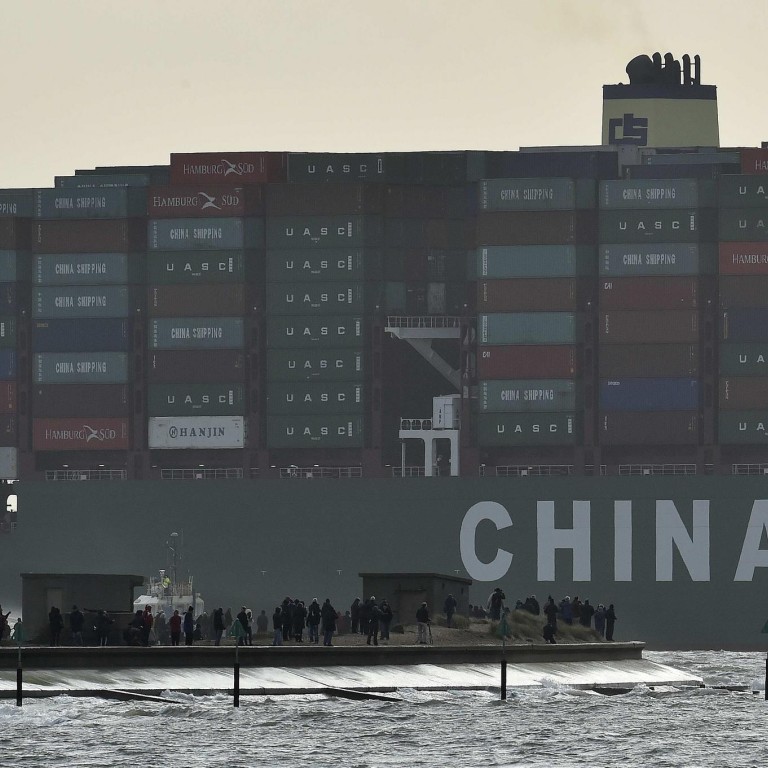
China’s December exports beat expectations, up 9.7 per cent to US$227.5 billion
The value of overseas sales jumps 9.7pc last month, underscoring the importance of foreign trade even as trade growth target is missed again
Exports will remain the key engine of economic growth this year even though the overall trade growth missed the annual target for the third consecutive year.
Among the "three engines" of the economy - trade, investment and consumption, "foreign trade will continue to be an important, or an indispensible, factor driving domestic economic growth," Customs bureau spokesman Zheng Yuesheng said yesterday.
The mainland's exports and imports rose by a combined 3.4 per cent last year, far below the official target of 7.5 per cent.
But trade growth may accelerate this year as the global economy improves, Zheng said.
In December, exports increased 9.7 per cent to US$227.5 billion from a year earlier, beating economists' consensus of a 6 per cent rise.
Imports fell 2.4 per cent to US$178 billion, compared with the forecast 6.2 per cent fall.
That brought the trade surplus to US$49.6 billion last month, almost doubling from US$25.6 billion a year earlier.
"Looking ahead, although the global economy remains fragile, we nonetheless expect growth in many of China's key export markets, such as the US, to stage a slight recovery this year, which should provide support to Chinese exports," said Capital Economics' Julian Evans-Pritchard. He added that import growth may remain weak due to subdued domestic demand.
Falling oil prices also trimmed the value of imports. Citigroup expects the average Brent oil price to drop 37 per cent this year.
"The net result is that we can continue to expect large trade surpluses going forward, which will put pressure on the renminbi to appreciate further in trade-weighted terms," he said.
Gradually recovering external demand may give Beijing some room to breathe as it tackles mounting challenges in the slowing economy, such as deflation, overcapacity and property slump. But that may also slow Beijing's economic rebalancing from investment and exports to consumption.
"China's economy has yet to effectively cut its reliance on exports," Citigroup economist Shen Minggao told the .
Exports last year rose 6.1 per cent in dollar terms, offset by a 0.4 per cent gain in imports. The trade surplus expanded 45.9 per cent to 2.35 trillion yuan (HK$2.9 trillion) last year, Zheng said.
He acknowledged the existence of fake trades in some sectors as companies report deals for trade financing or arbitrage purposes.
The mainland's exports to Hong Kong fell 6.6 per cent while imports slumped 21.5 per cent. Zheng blamed the drop on a high comparison base in certain months of 2013, when the trade volume surged extraordinarily. Analysts attributed the surge to speculative bets on yuan appreciation.
Geopolitical issues also took a toll on trade numbers. China's exports to Japan fell 1.4 per cent while the trade deficit widened by 10.5 per cent last year. Its trade with countries along the so-called New Silk Road economic belt, where Beijing is aiming to strengthen strategic and economic influence, rose 7 per cent to nearly seven trillion yuan in 2014. China's trade with the European Union and the United States rose 8.9 per cent and 5.4 per cent respectively.

